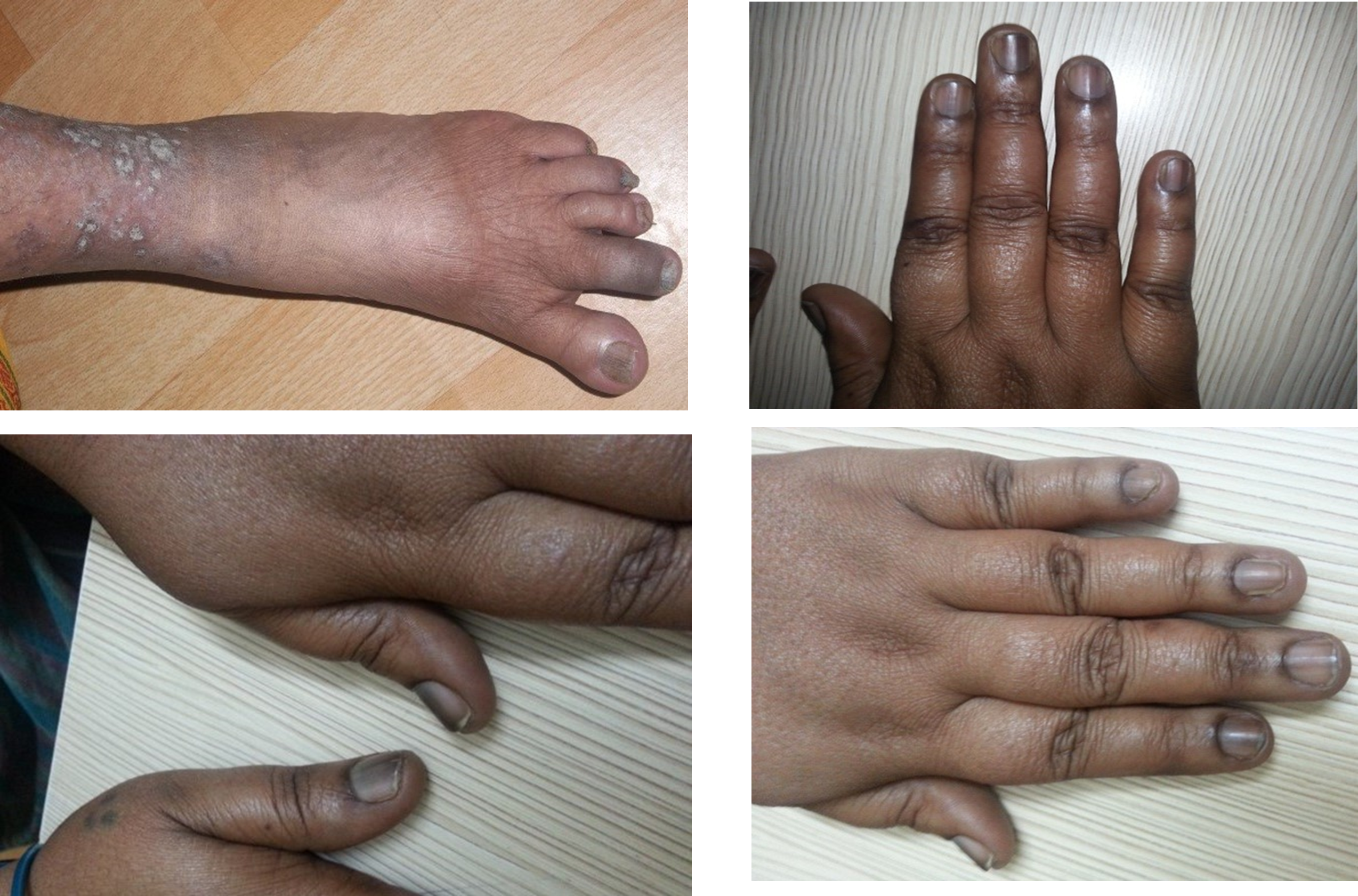
Image Type: Psoriasis and osteoarthritis
Body Site: Hands and legs
Description: Psoriatic arthritis (PsA) and osteoarthritis (OA) are prevalent forms of arthritis that often present similar symptoms, leading to potential misdiagnosis and delayed treatment. While OA is typically age-related and worsens over time, PsA is an autoimmune condition. Patients with psoriasis may struggle to differentiate between PsA and OA, complicating accurate diagnosis.
Both conditions share similar epidemiological patterns, commonly affecting individuals over 50 years of age. Clinical presentations can overlap, with both diseases potentially involving the same joints, such as the hands, knees, and spine. However, certain joints are more frequently affected in each condition; for instance, OA tends to impact the hips and carpometacarpal joints more, while PsA may target the metacarpophalangeal joints, ankles, and toes. Distinguishing features such as dactylitis (swelling of the fingers or toes) and psoriatic nail changes can aid in diagnosis.
Causes: In PsA, the immune system attacks the joints, leading to inflammation and damage. It often accompanies psoriasis. Genetic factors, immune system dysfunction, and environmental triggers contribute to its development. In contrast, OA arises from cartilage wear and tear, primarily due to aging, with other factors including joint injuries, obesity, and genetics playing a role. PsA involves immune-driven inflammation, while OA results from cartilage breakdown due to mechanical stress and joint abnormalities. Despite shared symptoms like joint pain and stiffness, distinct treatment strategies are necessary for each condition based on their unique underlying causes.
Diagnosis: Inflammation, a hallmark of PsA, may not be immediately evident, particularly in the early stages, while OA can exhibit a prominent inflammatory response early on, as observed in hand cases. Imaging techniques like ultrasound and MRI can provide valuable insights, but conventional radiography may not always differentiate between the two conditions, especially in the early phases of joint inflammation.
The diagnostic process involves a thorough assessment of joint symptoms, skin and nail manifestations, and imaging studies. X-rays, MRIs, CT scans, or ultrasound may be used to visualize joint structures, and blood tests or joint fluid analysis may be performed to rule out other forms of arthritis.
Treatment: Treatment strategies aim to alleviate symptoms and improve quality of life, as both PsA and OA are chronic conditions without a cure. Lifestyle modifications, such as weight management and physical therapy, are foundational for managing both conditions. Medications like NSAIDs may provide relief, while PsA treatment may also involve steroid injections, biologic drugs, and traditional medications. In severe cases, joint replacement surgery may be considered for OA.